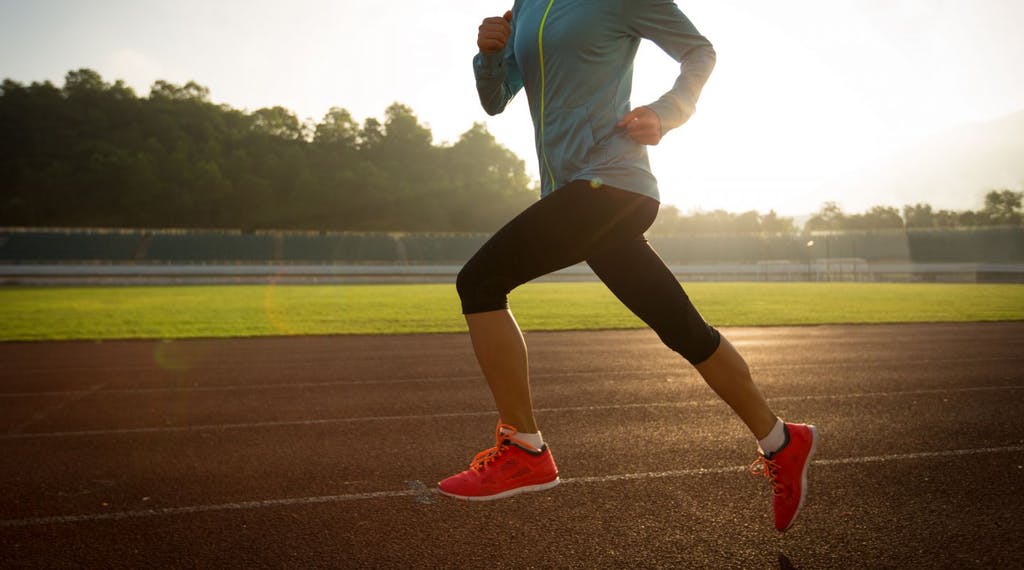Social distancing during the COVID-19 epidemic has hampered the activity of most athletes. Whether it is the literal closure of gyms and certain portions of public parks, or simply the anxiety centered around going outside, staying active has become increasingly difficult. Runners are no exception to this rule.
However, for runners, it is still possible to get in your miles. Not only this, but it is also important to continue getting in your miles. Research shows that regular exercise, assuming you are not sick, boosts immunity, and specifically, it significantly reduces the risk of contagious diseases caused by viruses and bacteria. Hence, if you’re worried about catching the coronavirus, one of your first lines of defense is regularly getting exercise. First and foremost, leading health experts suggest that so long as you keep a 6 feet distance from other people, it is perfectly safe to go out and run. In fact, not only is it safe but –aside from its immune-boosting benefits– it is recommended for the preservation of mental health.
Aside from keeping a 6-foot distance from other people, there are a few caveats to keep in mind for when you go out on your next run. Firstly, you probably should not drink from water fountains on your water break. According to Angela Rasmussen, a virologist at Columbia University, “We don’t have any data about how long the virus remains infectious on water fountains, but, given their proximity to other people’s mouths and noses, I would say you should not.” Next, when you get back from your run, you should take your shoes off before going back into the house. According to Saskia Popescu, an infection-prevention epidemiologist, the data doesn’t definitively suggest that the coronavirus sticks to shoes, “but they carry a lot of gunk in general, so leave them at the door.” This is simply a “better safe than sorry” protocol. Another tip is to find routes that are generally unpopulated. The news has reported repeatedly runners who are violating the 6-foot-distance rule by going to populated tracks to run. Not only is this putting yourself and others at risk, but it has the potential to increase the government’s likelihood to impose more restrictions on outdoor get-togethers, including going on walks or runs, as is what happened in Italy. Generally speaking, sidewalks and ordinary streets are a good option: fewer people are out and about, making adherence to the 6-foot-distance rule easier. Likewise, going on your run in the morning or the evening will make it easier to avoid others while continuing to social distance. An exceptionally good location is here in Brooklyn: Prospect Park! Prospect Park is a quite vast and expansive park, making it easy to keep a reasonable distance from others while still getting in a great run! Finally, if you like, you can wear a mask when you go out for your run. It isn’t necessary, as, transmission of the coronavirus is extremely unlikely by merely going outdoors. Still, for the sake of alleviating some anxiety about going outside, for yourself and others, it might be a good idea to wear a mask.
Runners, like all athletes, are susceptible to injuries. Research indicates that runners show an injury rate that ranged from 2.5 to 33 injuries per 1000 hours of training in novice runners and 17.8 injuries per 1000 hours of running in recreational runners. During this time, it can be hard to find treatment for such injuries. Many physical therapy practices have shut down due to the COVID-19 epidemic. We here at Park Sports Physical Therapy, however, are still taking on patients. An outline of Park Sports Physical Therapy’s guidelines during this time can be found here. Still, in short, we are currently offering physical therapy sessions via telehealth, which is essentially physical therapy guided coaching through video/audio online chats. The results of a study done by the Yale School of Medicine indicates little difference in effectiveness between in-person and telehealth physical therapy sessions. So if you are injured, feel free to request a telehealth PT session with us at Park Sports Physical Therapy.
If you are injured and would like to do some exercises on your own, here are three that are particularly helpful for runners. All of these movements will require a lacrosse ball. While these cannot nearly equal having an actual physical therapy session, they can certainly bring you some relief through self-soft tissue treatment for muscle soreness:
Lacrosse Ball Shin Smash:
This movement is particularly useful for knee, ankle, and foot soreness.


-
Source: Becoming a Supple Leopard by Dr. Kelly Starrett DTP
Lateral and Anterior Compartment Shin Mobilization:
If you are dealing with issues such as foot soreness, soreness associated with shin splints, strange downstream soreness, knee soreness, and/or ankle soreness, this movement can be helpful.



- Source: Becoming a Supple Leopard by Dr. Kelly Starrett DTP
Planter Surface Smash:
Plantar fasciitis is a painful condition that is extremely common for runners. And also, generally speaking, foot soreness is widespread amongst runners. One way to ease foot soreness is to roll your foot on a lacrosse ball:

- Source: Becoming a Supple Leopard by Dr. Kelly Starrett DTP
If you adhere to the above guidelines, you can continue your running routine while maintaining proper social distancing guidelines. Likewise, you can be sure that if any injuries arise during this time as a result of your runs, Park Sports Physical Therapy will have your back with our telehealth physical therapy sessions. Stay healthy, and keep trotting!
.png?auto=format&auto=compress&h=150)
